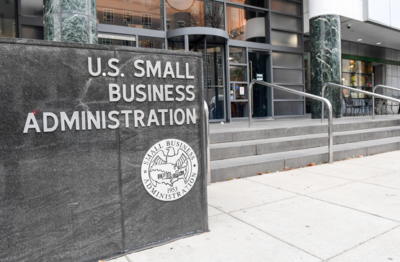
A longtime procurement executive gets White House recognition
If the General Services Administration is at the heart of much of federal procurement, Federal Drive host Tom Temin's guest for this interview is at the center of...
If the General Services Administration is at the heart of much of federal procurement, the Federal Drive with Tom Temin next guest for this interview is at the center of the GSA. Jeffrey Koses is GSA’s Senior procurement executive and chairman of the U.S. AbilityOne Commission. Most recently, Koses was recognized with a Presidential Rank Award. This interview is part of this week’s series of Rank Award winners.
Interview transcript:
Tom Temin
You really have been at the heart of a lot of GSAs procurement and vehicle work over the years, kind of ceaseless effort. I recall your work on the general schedules, the plain old, venerable GS system, which is really quite different from what it was many years ago. Talk about your own career highlights, what do you think is the best stuff?Jeffrey Koses
Upon graduating college, I figured, there’s no better place than D.C. for history and political science major. Came down here, quickly received a job from GSA, and it was a management development program in acquisition. Let me use that as a chance to tell, what I’d like to think of is my procurement origin story. It’s a few years later, I returned from paternity leave, following the birth of my first child and find out I’ve been moved to a new job. I was now the contracting officer, and GSAs contract with the airlines, the official travel contracts city pair program. So picture this, first day back, director calls me the office, he tells me I’ve got this new job, hands me a stack of protests to answer. He tells me that he has been working 80 hours a week, for six months and would be off for a while. Oh, and by the way, Jeff, we’re five months behind into the next contracts, annual contracts at that. So here I am. I’m adjusting to the new baby. The new job, I immediately catch a cold. So if you picture it’s 2 a.m. I walk in the house with this colicky baby. I’m talking to him all about the protests, and about how we’re going to answer these protests.Tom Temin
So that’s one way to raise the next generation, I suppose, is to kind of inculcate them early. By the way, what year was that? Because the airline industry has changed itself so much, since those days.Jeffrey Koses
Changed immensely. This is the mid 1990s. Yeah, maybe it’s the high fever. But I have three thoughts are from this experience. And those are thoughts that I’ve really built my career on, ever since. First, we need to take care of the acquisition workforce, we need smart, effective buying strategies that are using and leveraging automation, and communication. In this case, had we simply talk to the airlines, we wouldn’t be dealing with these protests. We needed helpful, productive industry relationships. And ever since, as I’ve moved between operation and policy jobs, those are the thoughts I kept in mind. And I’d suggest ultimately, that’s what led me into the role as GSA senior procurement exec. And there, I ended up as GSA representative to the AbilityOne commission. The small federal agency that provides job opportunities for people who are blind or have significant disabilities. And there my phone members elected me as commission chair.Tom Temin
Wow. So you have done a lot of things. But I think central to this, is the idea that procurement and acquisition sound, maybe to the generalized ear, as really dull, arcane things is actually a fascinating and dynamic type of activity, aren’t they?Jeffrey Koses
Definitely, I had no idea that I would have such a love and interest in acquisition. But upon entering GSA and starting to see just how much acquisition is behind everything else, how much it actually makes the federal government run and operate. That brought it out for me. And over the course of my career, I look how much government has changed. Over the last three half decades, the mission of what we asked the government to do, that has grown immensely. But the size of a federal workers, that has not changed. So how do we make that up? It is with our federal contractors. And so I’ve always found acquisition is at the center of so many other issues, off stage, but making everything else work.Tom Temin
And have you found, this is something another acquisition executive mentioned to me of a couple of months ago, something I didn’t realize, is that two business majors, people coming out at the collegiate level. Federal acquisition and federal procurement are actually attractive fields to them.Jeffrey Koses
Very definitely, we have a lot of business majors who move in. Until recently, there’s a statute requiring now folks had to have a degree or at least 20 per semester hours of that have degree in business related disciplines. But I also suggest, it’s a really important field for people studying liberal arts, people who have strong writing skills. With acquisition, it’s all about telling the story, it’s all about documentation, it’s all about clarity and communication.Tom Temin
We’re speaking with Jeffrey Koses. He is the senior procurement executive at the General Services Administration, and a recent presidential rank award winner. And getting back to the GS schedule. This is something that anyone who’s ever sold to the government in any capacity has touched on, at some point in their career. And you’d oversaw a major revision of the GSmultiple award schedules system a few years back, maybe just review that briefly for us.Jeffrey Koses
Absolutely. The schedules, for those who are not familiar with it, they’re really the entryway for business interested in contracting with the federal government. It covers 10s of millions of counties, products, services and solutions. So central to the schedule is the whole pricing structure. The schedules are based on the idea, that we are offering top notch prices for the products and services available. Historically, we have used a regulatory approach to get those good prices. It’s called the commercial sales practice, their detailed disclosure statements for companies report out of out their pricing, who they charged, how much and why. And a clause called the price reduction clause, hey, if somebody gets a better deal than we get the government, were going to come back and lower their price. That was a model built in the 1980s, built in a pre-internet age. It was built at a time when the schedules were all about products from manufacturers. But what we did is say, in today’s world, data is king. We’ve got to be able to use data instead of regulation to drive good pricing. Just as folks carry their phone, and they can check if something’s a good deal. We figured transactional data is going to be the key. So we went through the rulemaking process, we developed a new clause, and we ran a multiyear pilot to say, can we both make the schedule easier to use? Easier to get on, less regulatory burden, but more effective, better pricing through the use of data. And over the course of a multiyear pilot, we found that yes, indeed. We can produce better results, less expense, by relying on market forces, not on regulation to drive the schedules.Tom Temin
And the schedules then have remained relevant. And also, a really big piece of the federal procurement dollar goes through the schedules, even to this day with all of the competing [Governmentwide Acquisition Contract (GWACS)], and all of the many different types of task order vehicles out there.Jeffrey Koses
Absolutely. We seen 30 billion plus, per year, going through the schedules program. It remains the best source for our small business, small, disadvantaged business. And continues to be a tremendous value for federal agencies, because of the time it saves, because of the efficiency in getting to the solutions that they need.Tom Temin
All right, so tell us a little bit more about the Abilityone. What’s been the big change there? That’s another older program that seems to evolve as times change.Jeffrey Koses
Abilityone, that is the primary means, by which through contracts, we create jobs for people who are blind to wherever significant disabilities. Abilityone program, last year, created nearly 38,000 jobs for our target population. We have been very much focused on modernization and the commission. Within the last several months, we updated and phased out the use of subminimum wages. For decades, there was, what’s called a subminimum wage. That’s what it sounds like, a wage below the minimum wage, for workers who have disabilities. We thought that was really an outdated relic. And we went through the regulatory process to eliminate that. We created a network, of what we called Abilityone representatives, in 21 federal agencies, act as internal champions. If you think about what does a small business specialist do for small business program, that’s what the Abilityone representatives do for the Abilityone program.Tom Temin
And so it sounds like something you’re pretty proud of being associated with.Jeffrey Koses
Absolutely, not really expected to end up in, but I have found it’s so rewarding and so valuable to have that opportunity.Tom Temin
And as we speak, you are in the office, this particular day, because you’re wearing a suit and tie.Jeffrey Koses
That’s a tip off isn’t.Tom Temin
That’s the tip off. But in reality, you’re only there couple days, or maybe one day a week, like so many federal office types of employees. Has the telework made things better, worse, the same? GSA has been involved at the center of telework for so many years, also.Jeffrey Koses
I would suggest all of the above. Remote work has been fabulous, in that it gives us the ability to hire the best person anywhere in the country for a job. It lets us keep our amazingly talented employees, as a family circumstances, lead them to relocate across the country. It’s also created some incredible challenges. Challenges about, how do you bring employees into a culture? How do you ensure that they become part of the organization? That we get the right training, the right messaging, that we form relationships? So it’s an incredible management challenge. But it also, gives so much flexibility and opportunities to bring high performing people into our federal agencies.Tom Temin
And what’s your next big challenge, do you think? I don’t think you’re quite ready to hang it up here.Jeffrey Koses
Not quite yet. I’m very focused at the moment on issues involving the acquisition workforce. Within the last several days, the Office of Federal Procurement Policy, updated the curriculum for acquisition professionals. A hugely needed move from one that we can’t say enough good things about. It takes us to a modern commercial curriculum. And so I’m now working closely with Traci DiMartini. To say, Ok, how do we use this as the opportunity to address into refill the talent pipeline. Because this will open the door for us to recruit, not just people who have worked in government, but it opens the door to us for people who have no contract from the industry standpoint, from state and local government and from the nonprofit sector.Tom Temin
In other words, if you can get the right people and give them the right information and let them go, procurement acquisition will take care of itself.Jeffrey Koses
Really well said.
Copyright © 2025 Federal News Network. All rights reserved. This website is not intended for users located within the European Economic Area.
Tom Temin is host of the Federal Drive and has been providing insight on federal technology and management issues for more than 30 years.
Follow @tteminWFED





